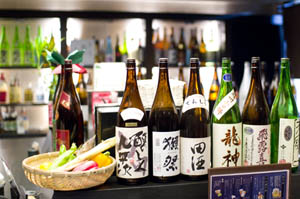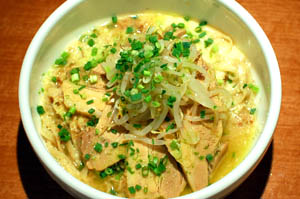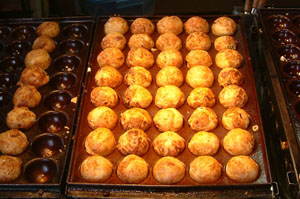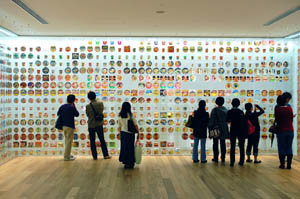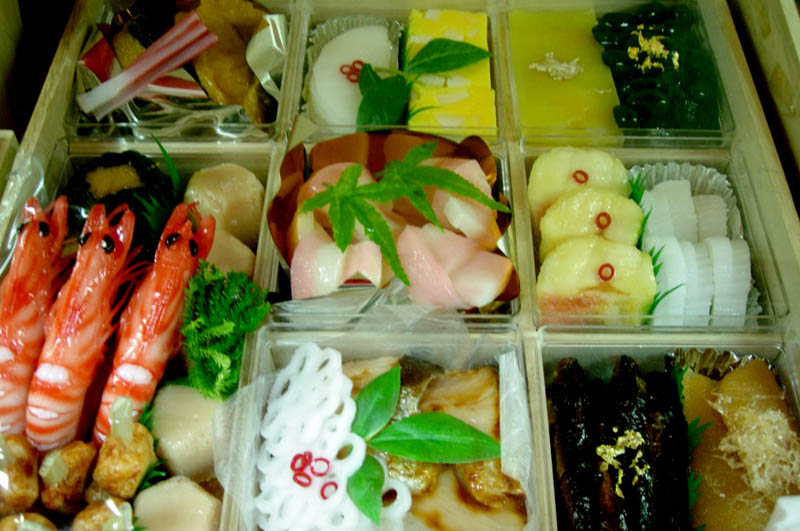
Dishes to eat at home during the holiday
Of all the annual holidays in Japan, the New Year (o-shogatsu) is often spoken of as the "most Japanese" of celebrations. With a history reaching back a thousand years, the traditional New Year's celebration is sprinkled with symbolism, and that symbolism is particularly evident in typical New Year's food.
"Osechi ryori" is what most people in Japan eat at the beginning of the new year. Regardless of how many times you splurge at Nobu, osechi isn't something you'll ever find on a Japanese menu. Its time and place are the first few days in January, in the Japanese home.
Osechi ryori was originally a way for housewives (and their families) to survive the first several days of the New Year, when stores throughout Japan were closed. The foods that make up osechi can be prepared in advance and then sit out in a cool area for a few days without spoiling. Most often everything is placed in compartmentalized lacquer boxes that are stacked in layers.

Today most osechi is purchased - either at department stores or at local supermarkets. Prices start at under Y10,000 (for portions that will feed a few people for at least three days), but it's also possible to spend literally a hundred times that amount (the equivalent of US $10,000). The high-end osechi food is made by famous chefs (or more likely, famous restaurants), and - typical of Japanese custom - is limited in production. High-priced department stores like Takashimaya start taking orders for osechi in late October, and often the most popular varieties sell out within a few days.
What's in osechi-ryori

Many of the food items represent prosperity, good fortune and health. (Unfortunately, regardless of how much osechi I've eaten I haven't seemed to have gotten any smarter, richer, or more industrious.) The basic components are the same, but regional differences are reflected in the sweetness or saltiness of the flavoring and the use of local ingredients.
One thing to keep in mind when looking at osechi is that presentation is very important. You may notice a pleasing balance of colors. What may be harder to notice, though, is the efficiency with which each layer is packed. The more elaborate osechi will have vegetables arranged in ornate designs, representing seasonal shapes such as pine cones and plum flowers.
The section below describes some typical osechi food items, and explains what they represent.

More cuisine articles
- © Copyright Lobster Enterprises
- Privacy
- Bento.com top
- © Copyright Lobster Enterprises
- Privacy
- Bento.com top
- © Copyright Lobster Enterprises
- Privacy
- Bento.com top








